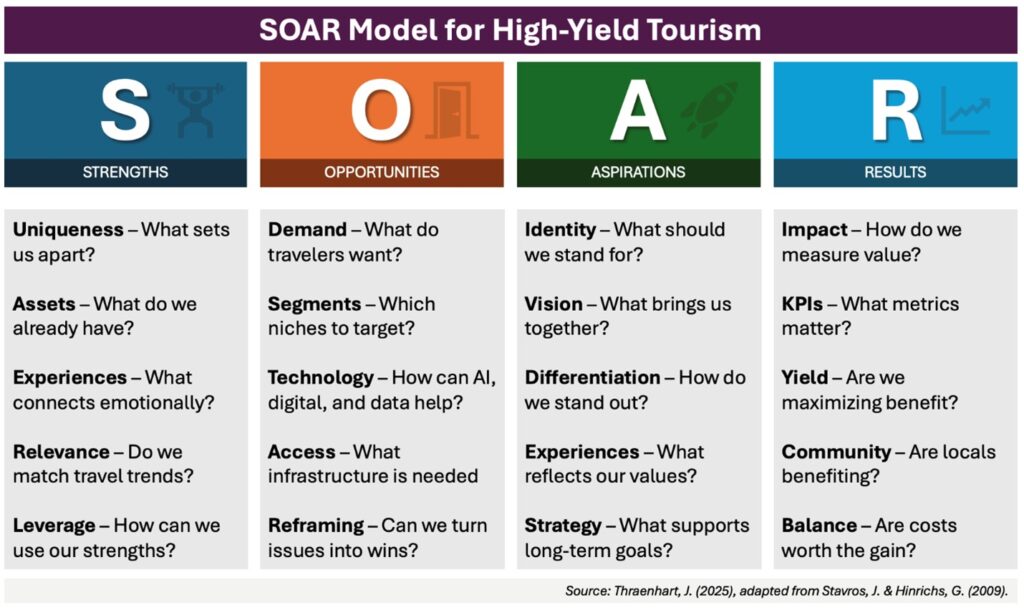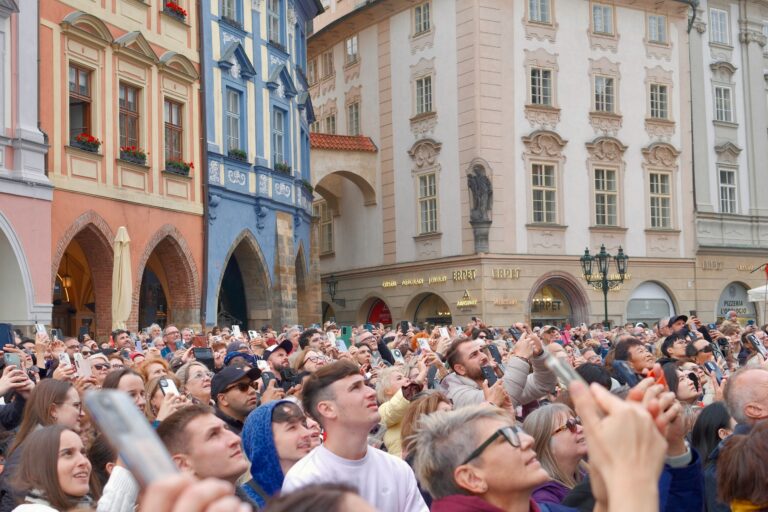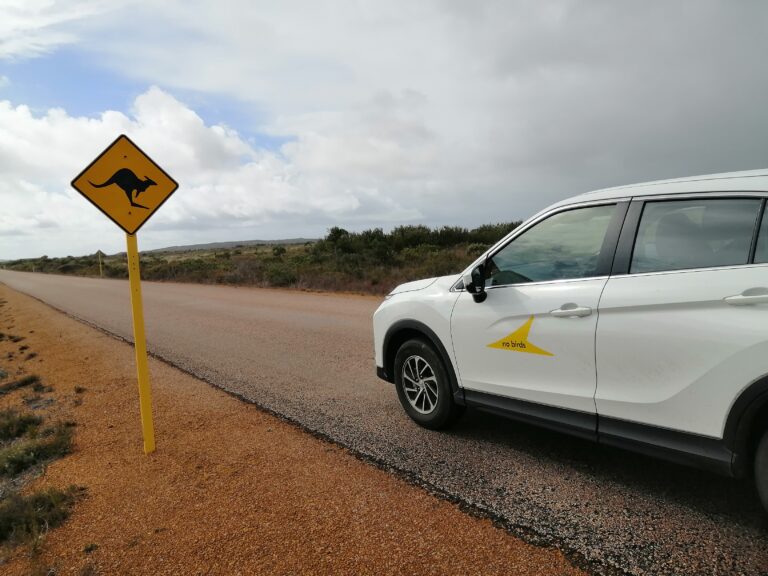Introducing The Strength-based Strategy Framework To Drive High-Yield Tourism
How an Adapted Business Model Is Revolutionizing Destination Planning: From Volume to Value
soar
/sɔː/
verb: achieving new heights; to rise very quickly to a high level

A New Lens for Tourism Planning: The SOAR Approach
When Jacqueline Stavros and Gina Hinrichs introduced the SOAR model in 2009, their goal was to move strategy conversations from problem-finding to possibility-seeking to address a fundamental challenge in organizational development: how do you create strategies that build on strengths rather than simply fixing weaknesses? Fast-forward to 2025, and destinations worldwide are grappling with remarkably similar questions. How do we move beyond chasing visitor numbers toward creating meaningful value? How do we turn tourism into a genuine force for good?
After two decades working with destinations worldwide, I’ve observed how traditional planning frameworks, while valuable, often focus significant energy on problems rather than possibilities. SWOT analysis has served the tourism industry well, providing systematic assessment of strengths, weaknesses, opportunities, and threats. Yet in practice, I’ve noticed how sessions examining weaknesses and threats can inadvertently shift focus toward defensive strategies rather than inspiring growth.
Based on these observations, I have adapted and refined the classic 15-year-old SOAR business model into a revolutionary framework specifically designed for travel and tourism organizations ready to transcend volume-based strategies. The SOAR Model for High-Yield Tourism represents my proprietary methodology that can help destinations attract passionate, high-value travelers while creating sustainable community prosperity.
This parallels insights from organizational psychology, particularly the StrengthsFinder approach popularized by Gallup research showing that individuals and organizations achieve greater success by building on natural strengths rather than solely fixing weaknesses. This doesn’t mean ignoring challenges, but it means choosing where to direct primary energy and attention.
While the original SOAR model transformed businesses, my tourism-specific adaptation addresses the unique challenges destinations face: overtourism, community resistance, authentic differentiation, and the urgent need to attract travelers who give more than they take. This isn’t just another planning tool. It’s a proven system that fundamentally shifts how destinations think about growth, value, and impact. This isn’t about chasing more tourists. It’s about attracting the right ones, those who stay longer, spend more, connect deeper, and leave a positive footprint, to build a tourism strategy that’s both profitable and purposeful.
This approach reframes how destinations think about value. Instead of chasing raw visitor numbers or chasing spend at any cost, SOAR guides travel and tourism leaders to focus on their unique essence, to attract aligned, passionate enthusiasts of micro-niche tribes, and to multiply impact far beyond vanity metrics.
Strengths: What makes you irreplaceable? What are our greatest strengths? (Culture, leadership, natural assets, unique stories)
Opportunities: Which passionate tribes align with your purpose? Where are the most promising opportunities? (Emerging markets, authentic experiences, purpose-driven travel)
Aspirations: What do you stand for beyond profit? What are our boldest aspirations? (Destination stewardship, community prosperity, transformative visitor journeys)
Results: How do you measure meaning, not just money? Which results will we celebrate? (Community support, advocacy, sustainable growth, repeat visitation)
This adapted SOAR model emerged from my own experiences of real destination transformations:
- Saudi Arabia: Leveraging Hafawa (authentic hospitality) as a Soft Power asset
- Cambodia: Elevating beyond temples to cultural pilgrimage experiences
- Vietnam: Turning cycling enthusiasts into economic multipliers for rural communities
- Thailand: Beyond Beaches to Cultural Mastery, leveraging Thainess (and the 5Fs)
- Mongolia: Nomadic Wisdom as Living Heritage to be positioned as Digital Detox Transformation
- Barbados: Showcasing Caribbean excellence in education, culture, sports, and culinary
- Canada: Indigenous Knowledge Meets Natural Majesty where First Nations communities are primary beneficiaries and storytellers
Each destination discovered that when you start with strengths, identify purpose-aligned opportunities, articulate authentic aspirations, and measure meaningful results, everything changes.
High-Yield Tourism applies this strength-based thinking to destination strategy. Rather than targeting “everyone” or competing on features destinations lack, it focuses on optimizing what makes each place genuinely distinctive. High-yield travelers stay longer, spend more, engage meaningfully with local culture, and become passionate ambassadors. The goal is creating resilient, sustainable visitor economies benefiting all stakeholders – residents, businesses, governments, and travelers.
The Evolution of Strategic Planning
When Jacqueline Stavros and Gina Hinrichs introduced SOAR in 2009, they addressed a fundamental question: how do we create strategies that build on strengths while still acknowledging realities? SOAR – Strengths, Opportunities, Aspirations, and Results – offers a complementary approach to traditional planning.
This isn’t about pretending challenges don’t exist. Destinations must absolutely understand their constraints, competitive pressures, and potential risks. The difference lies in emphasis and energy allocation. Where traditional planning might spend equal time on all four SWOT quadrants, SOAR consciously chooses to invest primary focus on strengths and opportunities while maintaining awareness of limiting factors.
Consider Slovenia’s strategic evolution. Rather than dwelling on having smaller ski areas than Austria or Switzerland, they recognized their unique position as Europe’s green heart where visitors could ski mornings and swim the Adriatic by afternoon. They built on this distinctive strength rather than trying to compete where they were disadvantaged.
Or consider the Faroe Islands. Too remote. Too rainy. Too small. Every traditional consultant would list these as weaknesses to overcome. Yet today, they attract premium-paying photographers and cultural enthusiasts who see that remoteness as luxury, that weather as drama, that size as authenticity. They stopped apologizing for what they weren’t and started amplifying what they were.
Tourism’s Unique Planning Context
Tourism differs fundamentally from other sectors. Destinations are living ecosystems shaped by culture, heritage, nature, and community aspirations—not products to engineer or manufacture. This complexity requires planning approaches that respect these dynamics.
Traditional business frameworks remain valuable diagnostic tools. Understanding weaknesses helps identify necessary improvements. Recognizing threats enables prudent risk management. However, I’ve observed that destinations achieving transformational success share a common pattern: they direct primary energy toward amplifying strengths and pursuing aligned opportunities.
Why Tourism Needs Its Own Strategic Framework
Traditional business frameworks fail tourism because they weren’t designed for destinations. When I adapted the 15-yeard-old SOAR framework specifically for high-yield tourism, I addressed the unique challenges we face:
- Multiple Stakeholders: From taxi drivers to ministers, everyone must share the vision.
- Living Heritage: You can’t manufacture authenticity or control culture.
- Passionate Micro-Niches: The future isn’t mass markets, it’s devoted micro-niche enthusiats.
- Purpose-Driven Travelers: 83% of millennials choose brands based on values alignment (Source: 5WPR, Consumer Culture Report, 2020)
The SOAR Model for High-Yield Tourism isn’t just another planning tool. It’s a proven system that transforms how destinations attract visitors who matter.
What if you could:
- Stop competing on price and start winning on purpose?
- Transform your perceived weaknesses into powerful filters for the right travelers?
- Measure success in shared stories, not just statistics gathered?
- Unite your entire destination – from taxi drivers to ministers – around a shared vision?
At its core, SOAR for High-Yield Tourism answers three critical questions:
- WHO are we attracting?(Not how many – focusing on quality over quantity)
- WHAT experiences are we creating?(Not what amenities we’re building – emphasizing authenticity and value)
- WHY does it matter?(Not just to us, but to everyone involved – ensuring positive impact for all stakeholders)
These questions form the foundation of my 3Qs framework, combining Intellectual Quotient (data and strategy), Emotional Quotient (authentic connections), and Social Quotient (community benefit).
- Intellectual Quotient (IQ): Leveraging data and strategic insights to target high-value markets, track tourism EBITDA, and enable data-driven decision-making.
- Emotional Quotient (EQ): Fostering meaningful connections via authentic storytelling, micro-niche experiences, and local ambassadors who embody the spirit and values of the destination.
- Social Quotient (SQ): Ensuring inclusivity, reducing economic leakage, and empowering local communities so the benefits of tourism are distributed equitably—a non-negotiable for sustainable growth
The Adapted SOAR Framework for Tourism
My adaptation of SOAR for High-Yield Tourism maintains the model’s appreciative foundation while incorporating tourism-specific considerations:
Strengths: What authentic, irreplaceable assets does your destination possess? These include not just attractions but knowledge, traditions, natural features, and community capabilities that passionate travelers value.
Opportunities: Which global passionate communities align with your strengths? Rather than targeting broad demographics, this identifies specific tribes whose interests match your authentic offerings.
Aspirations: What does your community want tourism to achieve beyond economic returns? This encompasses cultural preservation, environmental regeneration, and social wellbeing.
Results: How do we measure success beyond arrival numbers? This includes visitor transformation, community benefit, cultural vitality, and regenerative impact.
Important clarification: This approach doesn’t ignore challenges. Infrastructure limitations, seasonality, accessibility issues, and competitive pressures remain real considerations. The distinction is treating these as context to navigate rather than focal points dominating strategy sessions. When weaknesses require attention, address them—but don’t let fixing problems overshadow building on possibilities.
A Both/And Rather Than Either/Or Approach
Smart destination planning incorporates multiple perspectives. SWOT analysis provides valuable situational assessment. Market research reveals competitive dynamics. Financial analysis ensures viability. SOAR adds another lens—one focused on possibility, strength, and aspiration.
Think of it as portfolio management. Financial advisors recommend balancing growth investments with defensive positions. Similarly, destination strategies benefit from balancing problem-solving with opportunity-building. The question isn’t whether to use SWOT or SOAR, but rather how to integrate multiple frameworks for comprehensive understanding.
Why Emphasis Matters
Research in positive psychology demonstrates that where we focus attention shapes outcomes. Organizations spending the majority of their strategic planning time on problems tend to develop defensive, incremental strategies. Those investing similar energy in strengths and opportunities more often achieve breakthrough innovation.
This doesn’t mean adopting unrealistic optimism. It means consciously choosing where to direct limited resources – time, money, attention, and community energy. For destinations facing overtourism, environmental degradation, and community resistance, continuing to focus primarily on problems risks creating strategies that merely mitigate decline rather than enable transformation.
Moving Forward Together
The tourism industry stands at an inflection point. Traditional volume-based models face mounting challenges. Communities demand tourism serving their interests, not extracting their resources. Travelers increasingly seek meaning over consumption. Climate change requires fundamental reconsideration of growth models.
Addressing these challenges requires new thinking alongside proven methods. SOAR offers one approach, not as replacement for traditional planning but as complementary framework emphasizing possibility over problem, strength over weakness, aspiration over limitation.
Whether using SWOT, SOAR, or other frameworks, the essential shift remains the same: from volume to value, from extraction to harmony, from mass markets to passionate communities. The tools we choose should serve this transformation, helping destinations discover and amplify what makes them irreplaceable rather than fixing what makes them imperfect.
Listen to our podcast Episode 23 on "Can the SOAR Framework Elevate the Quality of Destination Development?"
Photo by louis magnotti on Unsplash
more insights

The AI Divide in Tourism: How Big Data Is Leaving Small Operators Behind
The AI Divide in Tourism: How Big Data Is Leaving Small Operators Behind Artificial intelligence (AI) and big data are transforming the tourism industry. From

Beyond Boom and Bust: Rethinking Tourism Policy for Sustainable Growth
Beyond Boom and Bust: Rethinking Tourism Policy for Sustainable Growth Tourism is often hailed as a key driver of economic growth, cultural exchange, and local

6 Reasons Why Western Australia Excels at Self-Drive Tourism
6 Reasons Why Western Australia Excels at Self-Drive Tourism Gary Bowerman reflects how ‘WA’ – self-titled as ‘Home of the Road Trip’ – maximises the
High-Yield Tourism
68 Circular Road #02-01
Singapore 049422
Email: hello@highyieldtourism.com
Sign-up to receive updates about High-Yield Tourism, industry news, and reports.
